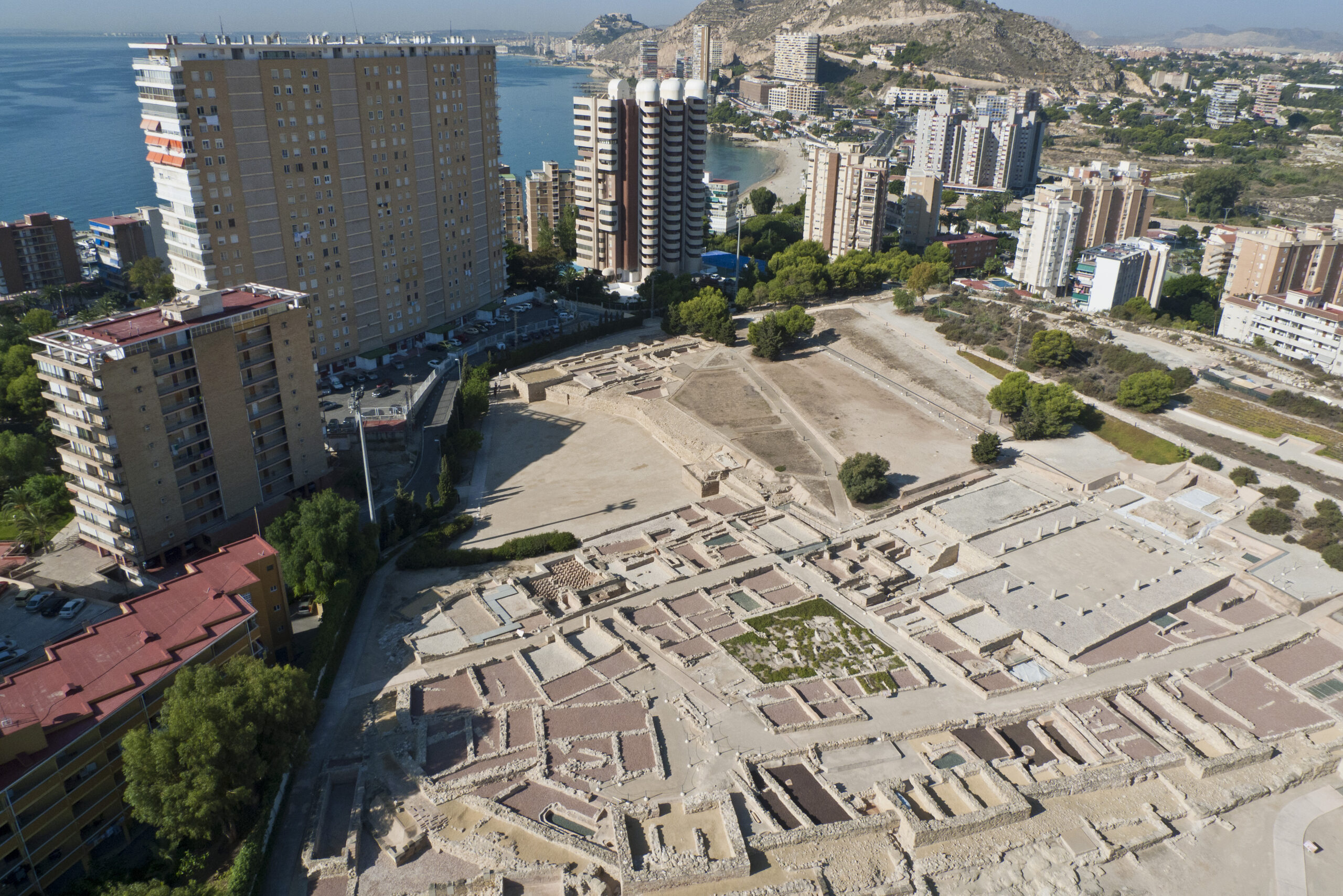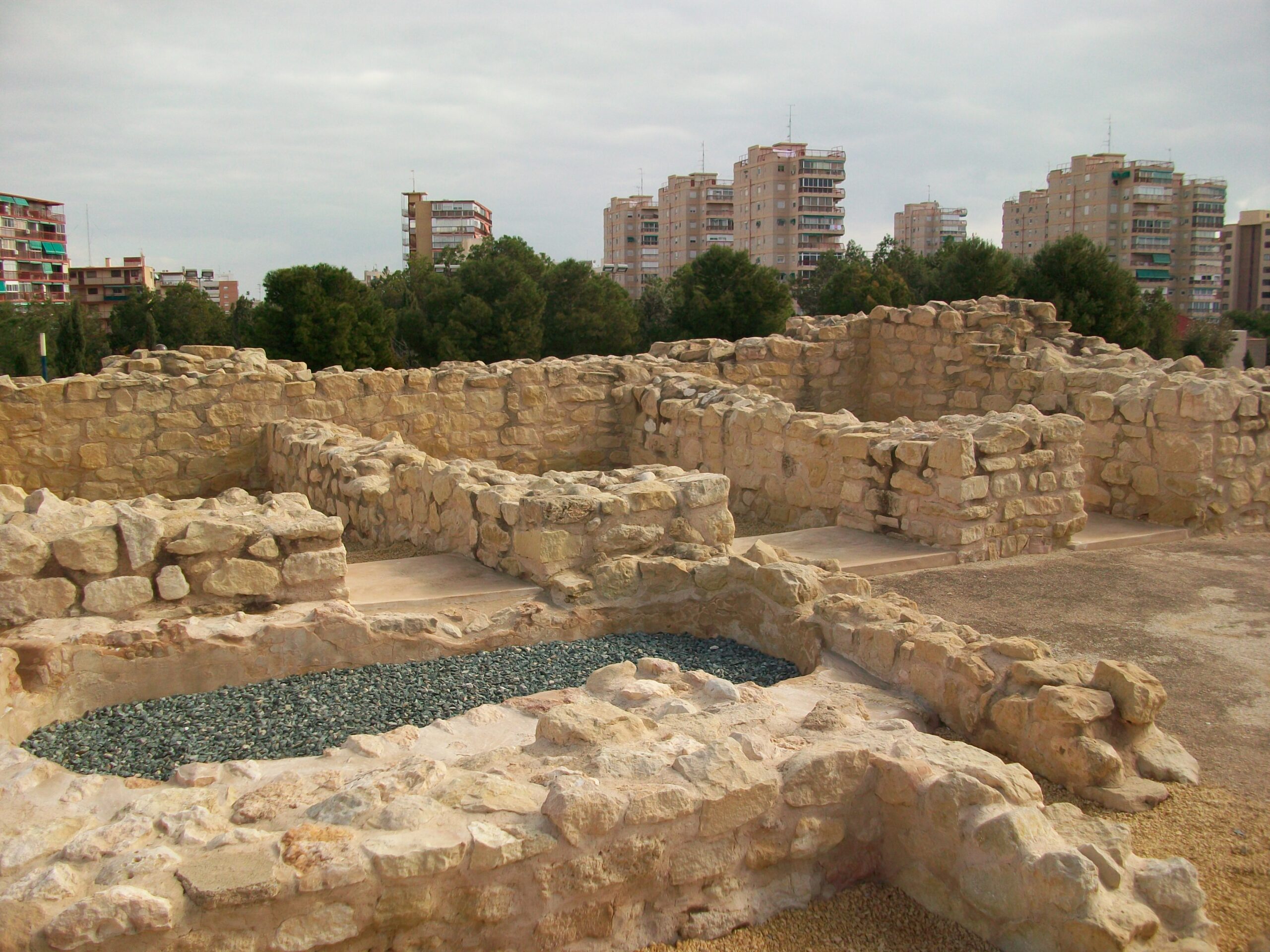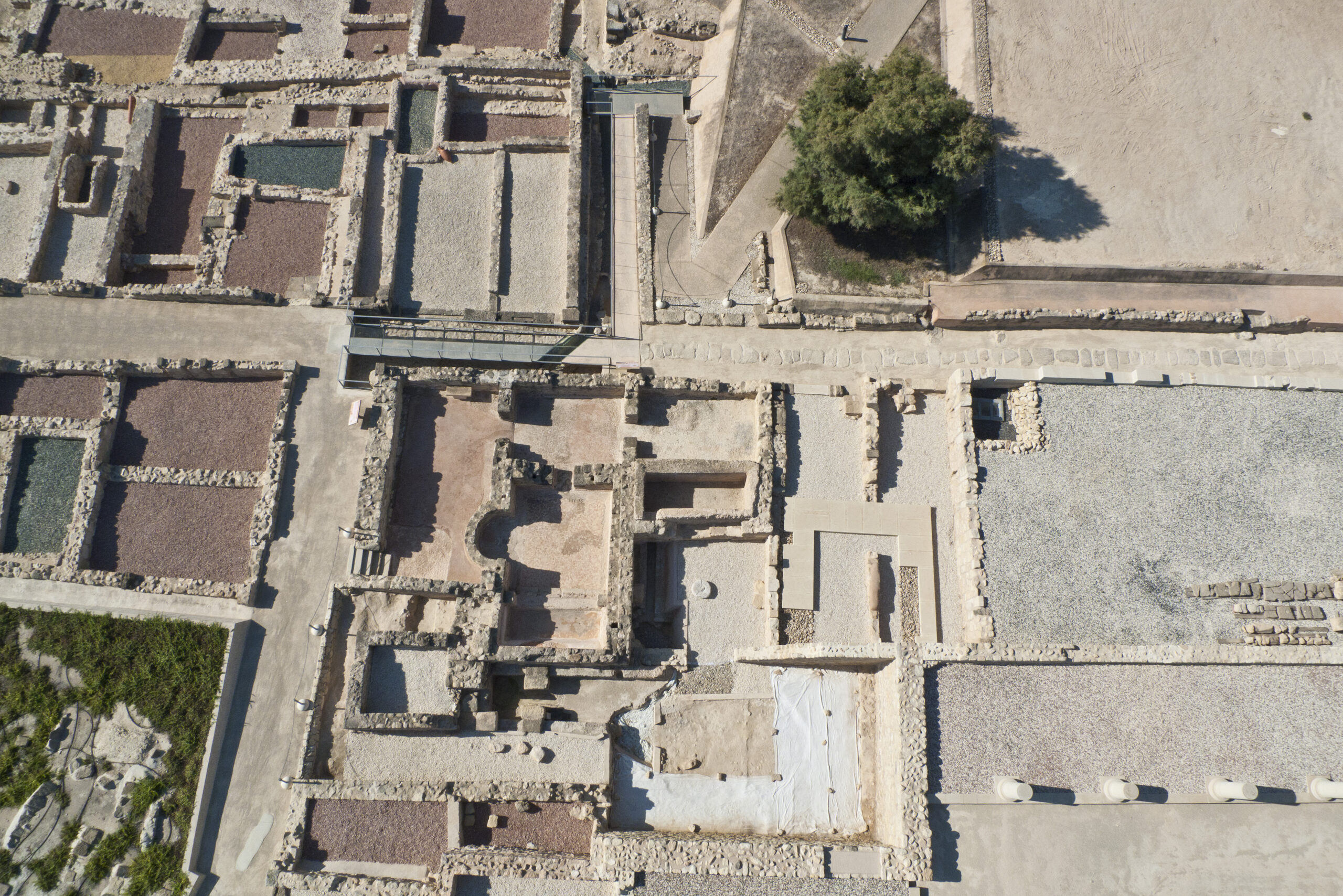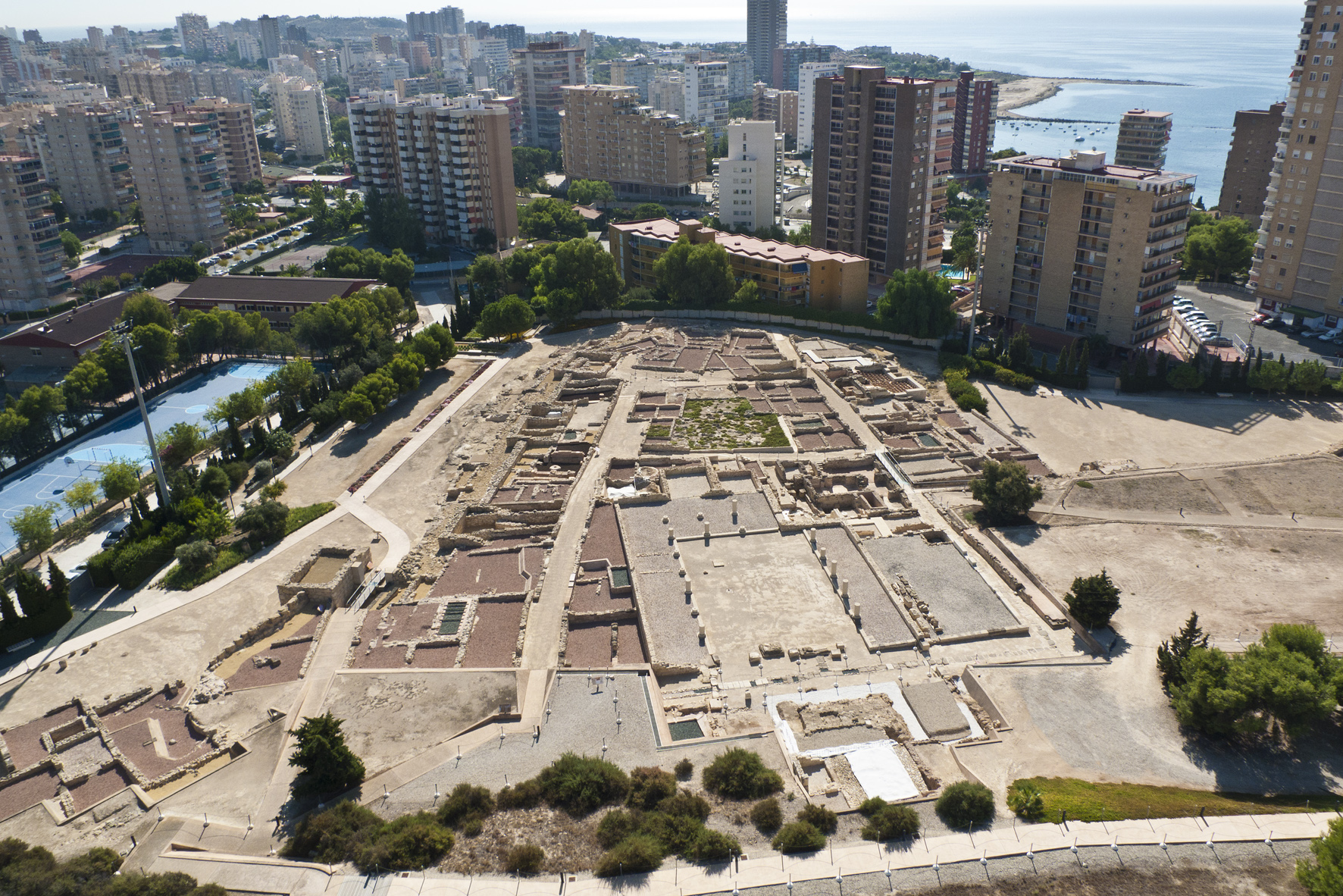TOSSAL DE MANISES
The Tossal de Manises is the site of the Roman city of Lucentum, the ancient city of Alicante, probably developed from an Iberian settlement located on the hilltop. It is located at the top of an elevation (tossal) next to the sea, which reaches a height of 38 metres, 3.5 km from the centre of the modern city, in the district of La Albufereta.
It is one of the most important archaeological sites in the Valencian Community, one of the few Roman cities known in depth, and was declared a Historic-Artistic Monument in 1961. At present, the entire urban area (around 25,000 m2) has been preserved intact, enclosed by a wall whose perimeter measures approximately 600 metres.

Once this first urban phase was destroyed at the end of the Second Punic War, around 200 BC, the Tossal experienced a long period of abandonment and neglect, which began to change at the end of the 2nd century BC, This began to change at the end of the 2nd century BC, when a new episode of construction took place in which the walls were rebuilt, lining the existing ones and erecting new towers lined with ashlars, completing the defensive system with the restructuring of the access on the eastern side, the land side, where a new gate was built, defended by a large tower and a large bastion located at the southeast end of the site.
From the middle of the 1st century BC, a major building project began in which the entire urban road system was restructured. During the reign of Augustus, the first Roman emperor, the city acquired the status of municipium (municipality), whereby it was governed autonomously with distinctly Roman magistracies and institutions, and it was then that the name Lucentum was historically and epigraphically attested. During the late 1st century BC and the whole of the 1st century AD, the city experienced a period of certain splendour, inaugurated with the construction of the forum, two public thermal baths, a new gateway to the enclave, a sewage system and at least one temple, according to epigraphy, as well as the extension of the city beyond the original limits established by the walls.


At the end of the 1st century AD, the signs of the city's decline began to become apparent, leading to a period which culminated in the definitive abandonment and disappearance of the city in the 3rd century AD, a process which was due to internal economic reasons and regional dynamics. After a new period of sporadic frequentation, in which the site became a quarry of materials for the construction work around the ancient city, the site was occupied, this time as a funerary space, between the 8th and 10th centuries AD, when we witness the creation of a maqbara (cemetery) fully characterised by the implementation of the Islamic funerary rite.

TOSSAL DE MANISES
The Tossal de Manises is the site of the Roman city of Lucentum, the ancient city of Alicante, which probably developed from an Iberian settlement located on the top of the...
WINTER TIMETABLE
FROM TUESDAY TO FRIDAY: 12:00h
SATURDAYS: 12:00 y 16:00h
SUNDAYS AND PUBLIC HOLIDAYS: 12:00h
FROM TUESDAY TO SATURDAY
From 10:00 a.m. to 2:00 p.m.
From 15:30 h to 17:30 h
SUNDAYS AND PUBLIC HOLIDAYS
From 10:00 to 14:00 H
MONDAY CLOSED
> Wear comfortable shoes and a cap/hat.
> It is suggested to bring a bottle of water and sun protection.
